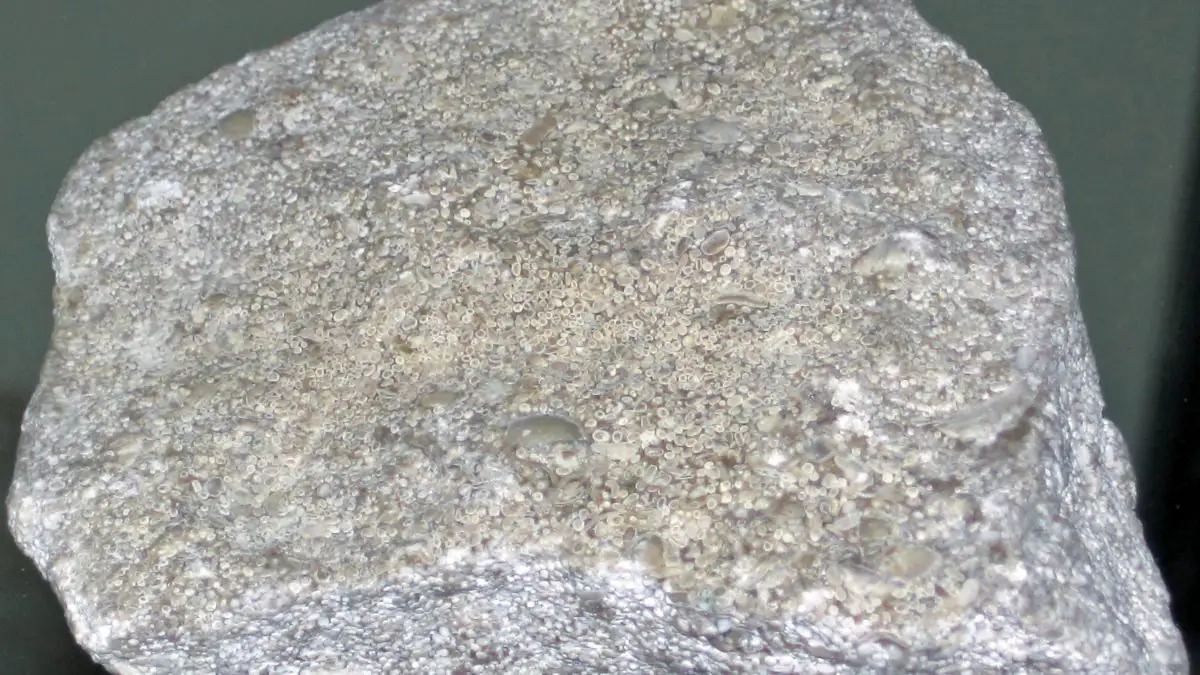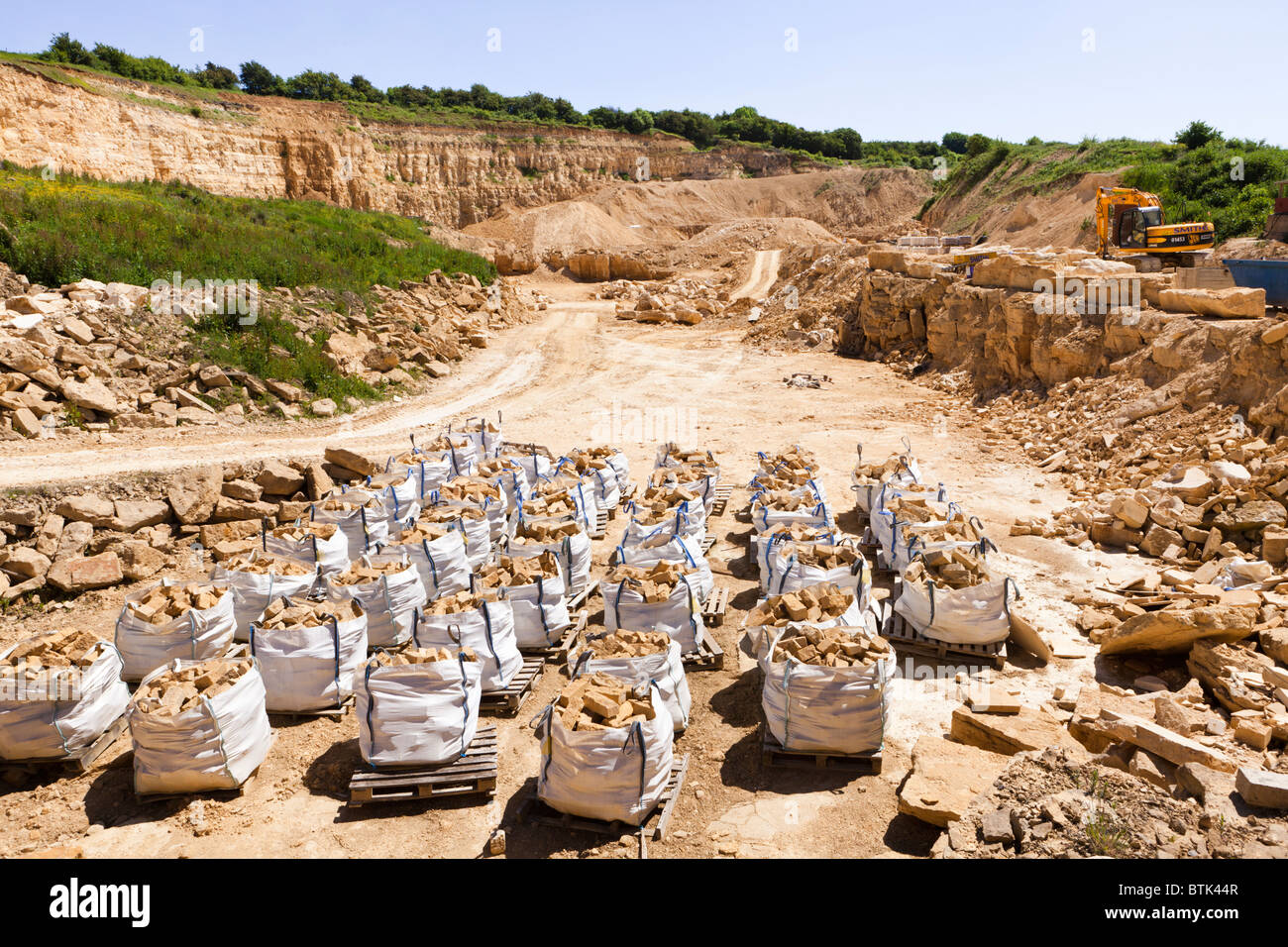

It formed in warm, shallow seas where evaporation concentrated the dissolved calcium carbonate and then the precipitated material formed concentric layers building up around a nucleus of, usually, a shell fragment as the sea surface was disturbed by winds rolling the sea-bed material around: the resulting little rounded balls are called ooliths or ooids. Much of the rest of the Lower Lincolnshire limestone is oolitic. It is now largely replaced in new work by concrete imitations. A stone from this part of the formation which was commercially exploited is the Collyweston stone slate which was used for roofing for several centuries. Ooids are spheroidal grains with a nucleus and mineral cortex accreted around it which increases in sphericity with distance from the nucleus. Most oolites are limestones ooids are made of calcium carbonate (minerals aragonite or calcite ).

The bottom of the Lower Lincolnshire limestone has some of the characteristics of the underlying Lower Estuarine Series, in that it tends to contain more than usual amounts of sand. Oolite is a sedimentary rock made up of ooids (ooliths) that are cemented together. The Crossi bed forms the top of the Lower Lincolnshire limestone. All varieties in the Calcite-Dolomite horizontal column are possible here. The dividing marker is the 'Crossi' bed which is distinguished by the fossils of the brachiopod Acanthothris crossi it contains. Siliceous Oolite: > 50 oolitic Oolitic Chert: < 50 oolitic Diatomite: diatom tests Radiolarite: radiolarian tests: Siliceous Limestone: disseminated silica Cherty Limestone: containing chert nodules Etc.

There are two sub-divisions, the Upper and Lower Lincolnshire Limestone Members respectively. It fades out in the south, around Kettering in Northamptonshire. The maximum known thickness is 40.2 metres, at around TF9730, while four kilometres further west it is 18.3 metres thick at its outcrop in the upper Witham valley.

Crushed stone is used for a variety of construction purposes like road base and concrete aggregate. Limestone’s major industrial uses are as crushed stone, in lime manufacture, and in cement manufacture. The origin of the raw material was elusively discussed earlier 6, and already the discoverer Josef Szombathy suspected that the. It was formed around 170 million years ago, in a shallow, warm sea on the margin of the London Platform and has estuarine beds above and below it. Oolites are the small, egg-shaped, white sand grains that form many of the white sand beaches along the shores of the lake. Oolitic limestones are completely absent in and around Willendorf. The Lincolnshire Limestone Formation is a geological formation in England, part of the Inferior Oolite Group of the ( Bajocian) Middle Jurassic strata of eastern England. 1 It was formed around 170 million years ago, in a shallow, warm sea on the margin of the London Platform and has estuarine beds above and below it. Market Weighton to Kettering, Peterborough The Lincolnshire Limestone Formation is a geological formation in England, part of the Inferior Oolite Group of the ( Bajocian) Middle Jurassic strata of eastern England. Grantham Formation, Northampton Sand Formation or Lias Group Rutland Formation, Great Oolite Group or Hunstanton Formation, Chalk Group As glaciers and polar ice caps started melting 15,000 years ago, flooding of land combined with tidal influence changed the geography of the Keys and their surrounding areas.Upper Lincolnshire Limestone Member, Lower Lincolnshire Limestone Member The two dominate rock formations in the Keys are Key Largo Limestone and Miami Oolite.ĭuring this time of lower sea levels, the Florida land mass was much larger than it is today and the area now referred to as Florida Bay was forested. They are island remnants of ancient coral reefs (Upper Keys) and sand bars (Lower Keys) that flourished during a period of higher sea levels approximately 125,000 years ago (a period of geologic time known as the Pleistocene Epoch).ĭuring the last ice age (100,000 years ago) sea level dropped, exposing the ancient coral reefs and sand bars which became fossilized over time to form the rock that makes up the island chain today. The Crocodile Spring at Compton Abdale in the Cotswold Hills. The distribution of Limestone outcrop in the Thames Basin. The Florida Keys are a chain of limestone islands that extend from the southern tip of the Florida mainland southwest to the Dry Tortugas, a distance of approximately 220 miles. Properties of the Great Oolite and Inferior Oolite aquifers.


 0 kommentar(er)
0 kommentar(er)
